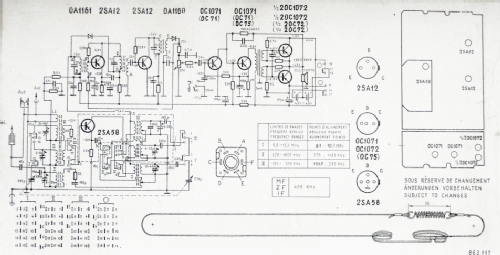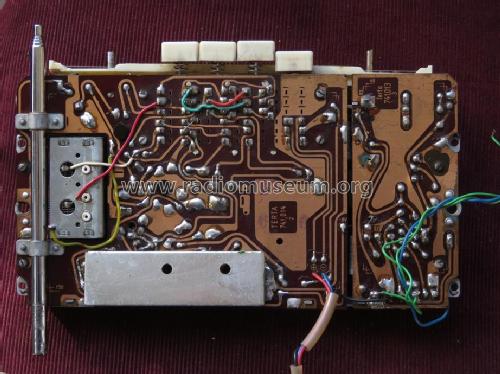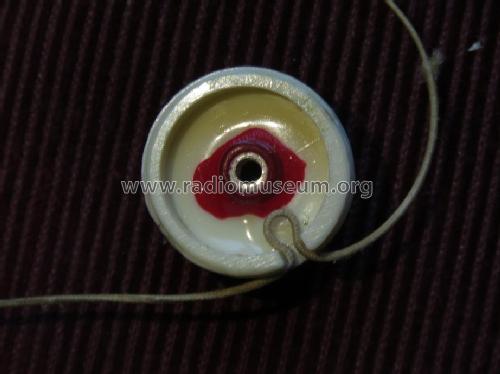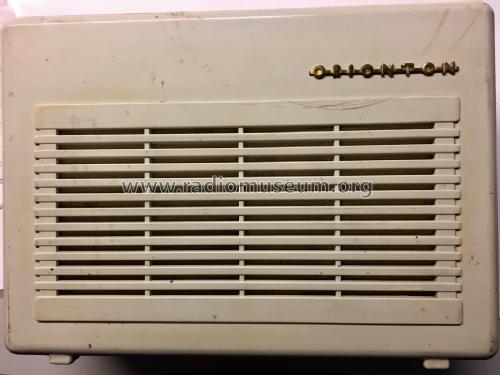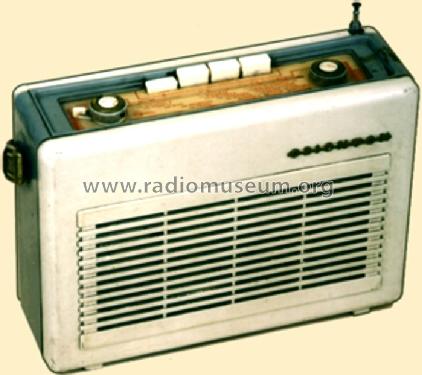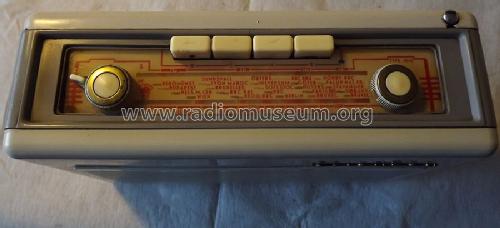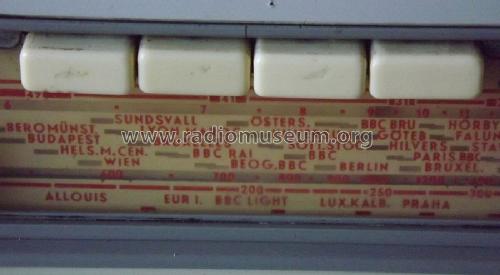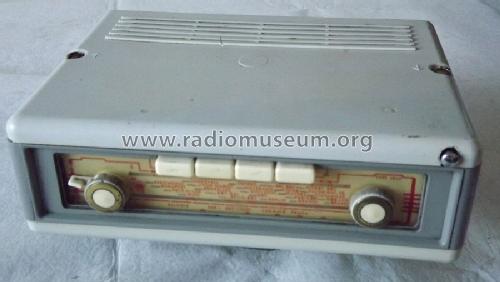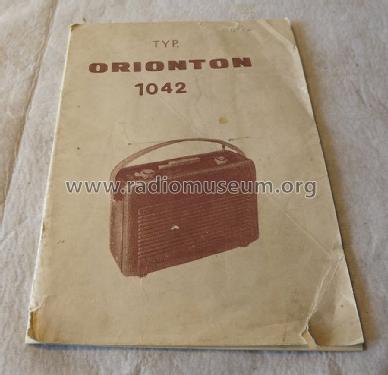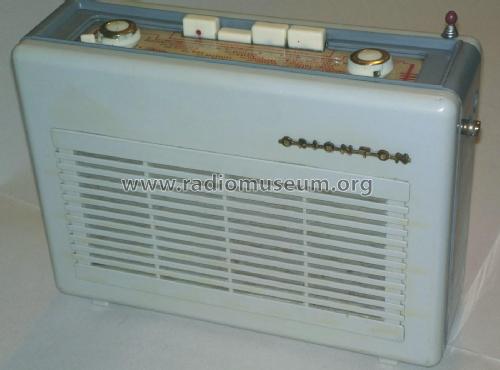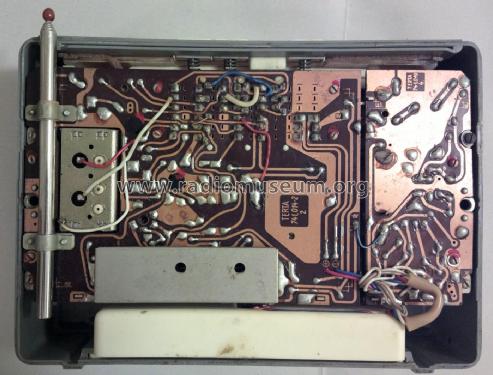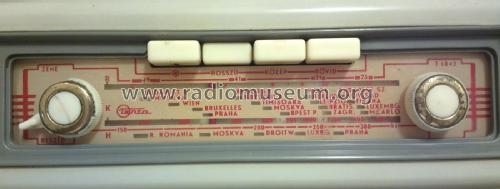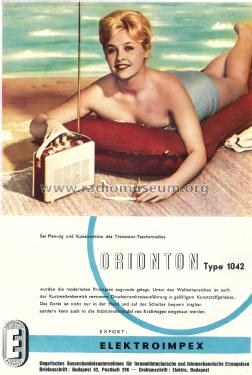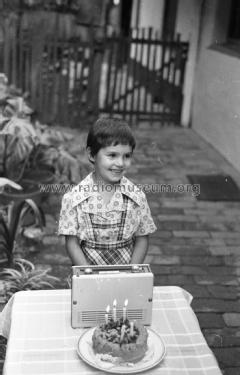Orionton T1042
Telefongyar, Terta (TRT, Export = Orion); Budapest
- Country
- Hungary
- Manufacturer / Brand
- Telefongyar, Terta (TRT, Export = Orion); Budapest
- Year
- 1961
- Category
- Broadcast Receiver - or past WW2 Tuner
- Radiomuseum.org ID
- 73706
-
- Brand: Terta, TRT
Click on the schematic thumbnail to request the schematic as a free document.
- Number of Transistors
- 7
- Semiconductors
- 2SA58 2SA12 2SA12 OC71 or. OC1071 OC75 or. OC1071 OC72 or. OC1072 OC72 or. OC1072 OA1161 OA1160
- Main principle
- Superheterodyne (common); ZF/IF 455 kHz; 3 AF stage(s)
- Tuned circuits
- 5 AM circuit(s)
- Wave bands
- Broadcast, Long Wave and Short Wave.
- Power type and voltage
- Storage and/or dry batteries / 2x4.5 Volt
- Loudspeaker
- Permanent Magnet Dynamic (PDyn) Loudspeaker (moving coil) - elliptical
- Power out
- 0.3 W (unknown quality)
- Material
- Plastics (no bakelite or catalin)
- from Radiomuseum.org
- Model: Orionton T1042 - Telefongyar, Terta TRT, Export
- Shape
- Portable set > 8 inch (also usable without mains)
- Dimensions (WHD)
- 250 x 180 x 85 mm / 9.8 x 7.1 x 3.3 inch
- Notes
-
Orion Orionton 1042 resp. Terta T1042.
Tone control, connector for external antenna. There are additional connectors for antenna and ground located in the screws that secure the lid.
Compare with Orionton 1042a.
- Net weight (2.2 lb = 1 kg)
- 2 kg / 4 lb 6.5 oz (4.405 lb)
- Price in first year of sale
- 1,800.00 HUF
- Source of data
- Radio es Televizio Vevö Keszülekek, 1960-63
- Author
- Model page created by Felix Schaffhauser. See "Data change" for further contributors.
- Other Models
-
Here you find 218 models, 203 with images and 55 with schematics for wireless sets etc. In French: TSF for Télégraphie sans fil.
All listed radios etc. from Telefongyar, Terta (TRT, Export = Orion); Budapest
Collections
The model Orionton is part of the collections of the following members.
Forum contributions about this model: Telefongyar, Terta: Orionton T1042
Threads: 1 | Posts: 1
Wenn man sich nachher die Liste der Mängel ansieht, fragt man sich, warum man je mit dem Aufpäppeln des Patienten begonnen ist.
- Abstimmachse fest
- Drehkondensator fest
- Drehkondensator-Platten verbogen
- Seilzug kaputt
- Zeiger beschädigt
- Skalenplatte Aufdruck stark beschädigt
- LW Spule ab
- Lose Spule seitlich am Ferritstab, ein Draht ab
- Halterung der Ferrit-Antenne auf einer Seite abgebrochen
- Lautes Krachen und Rauschen
- KW ohne Empfang?
- Kleines Abschirmblech lose
- Teleskop-Antennenkopf ab, oberstes Glied eingeschoben
- Falsche Knöpfe
Am Schluss fragt man sich nicht mehr: Das Gerät läuft, auf Langwelle, Mittelwelle und Kurzwelle! Der Klang ist zwar etwas ‚verwischt‘, kein Wunder, bei all den alten Kondensatoren. Optisch ist das Radio ganz nett. Doch dann die Abstimmung: Sie ist eine reine Freude! - Leicht und präzise geht sie; der Zeiger läuft elegant mit, und er weist mir wieder die Sender an aus aller Welt!
Bruce Cohen, 21.Apr.20
